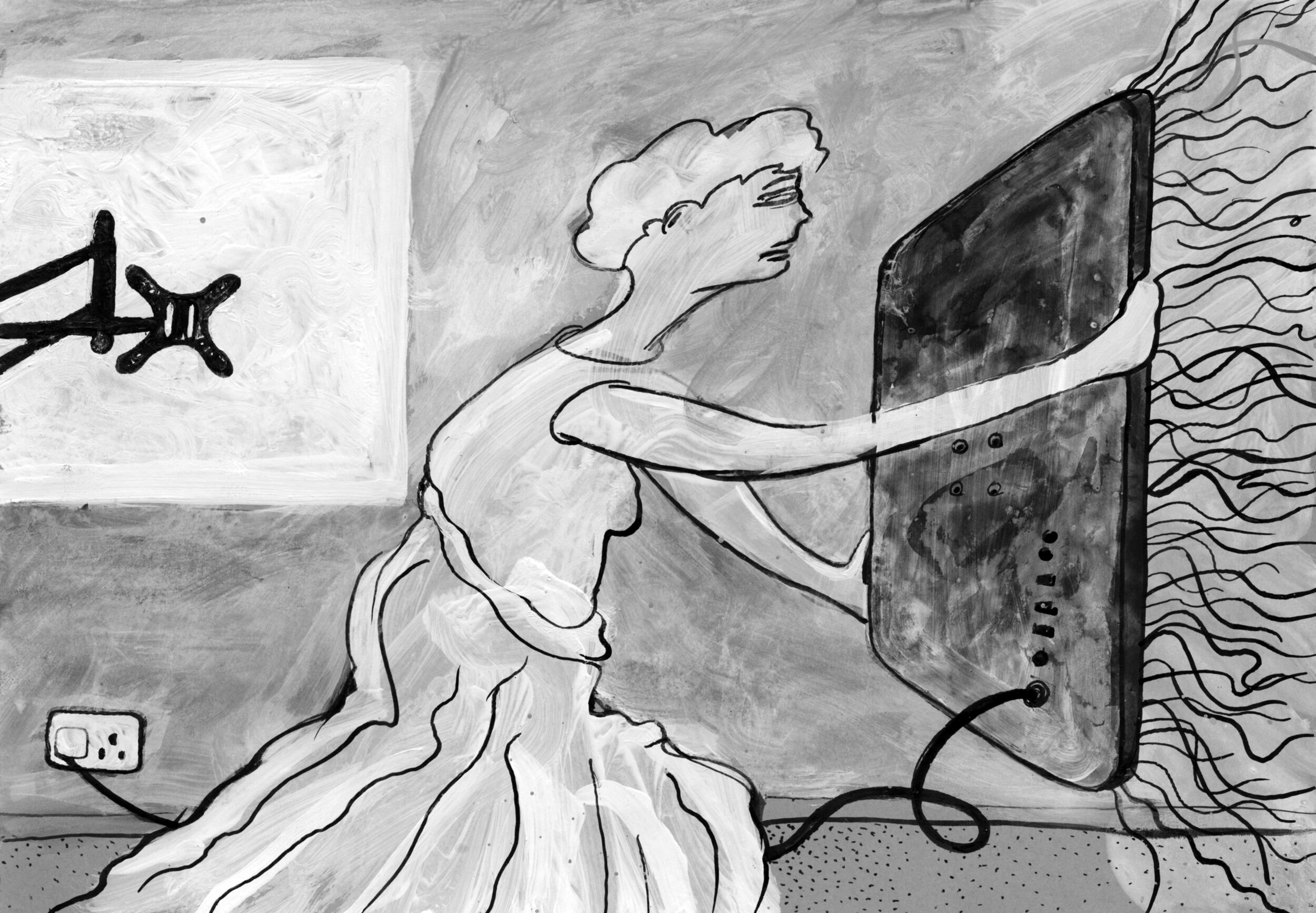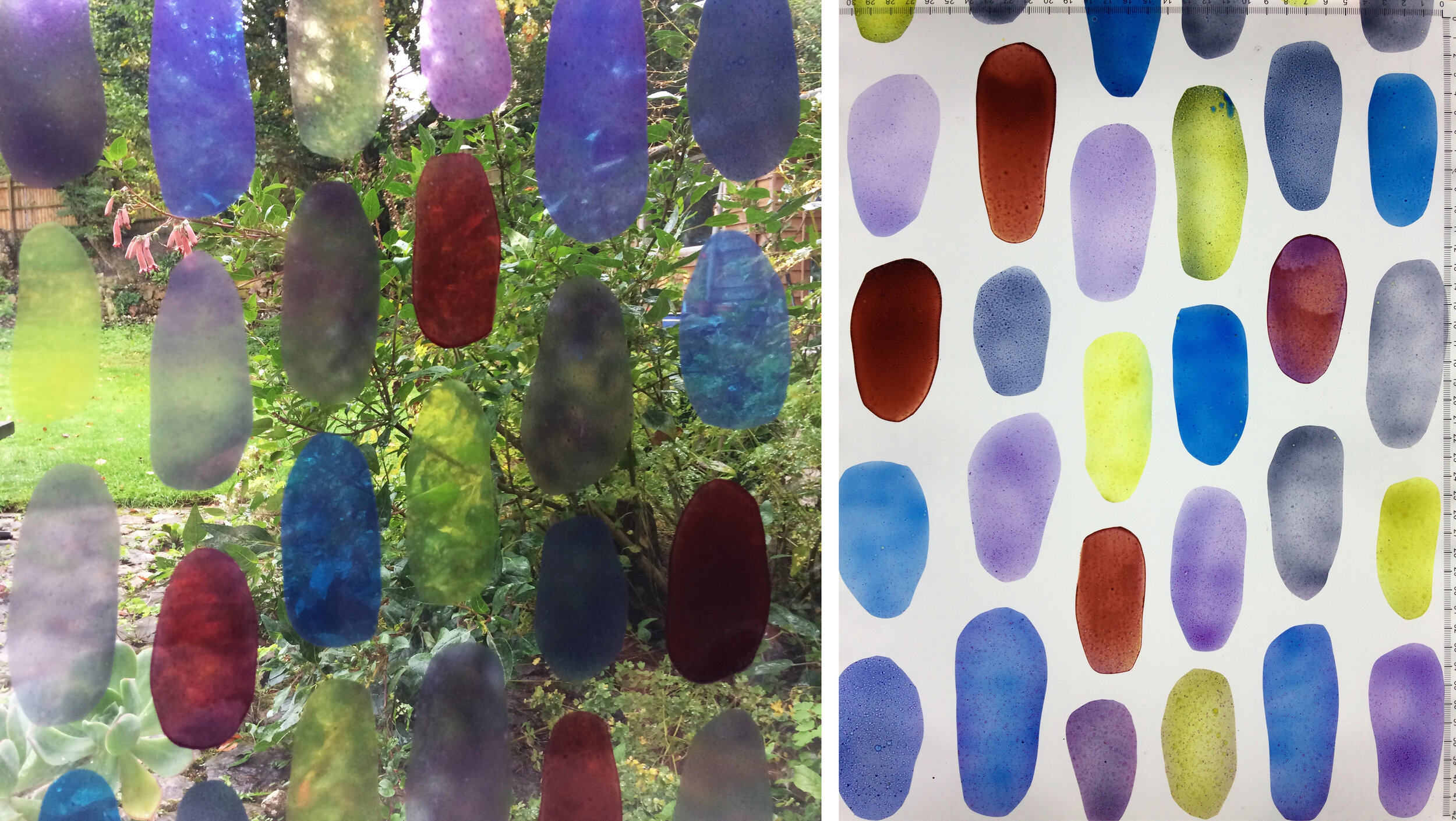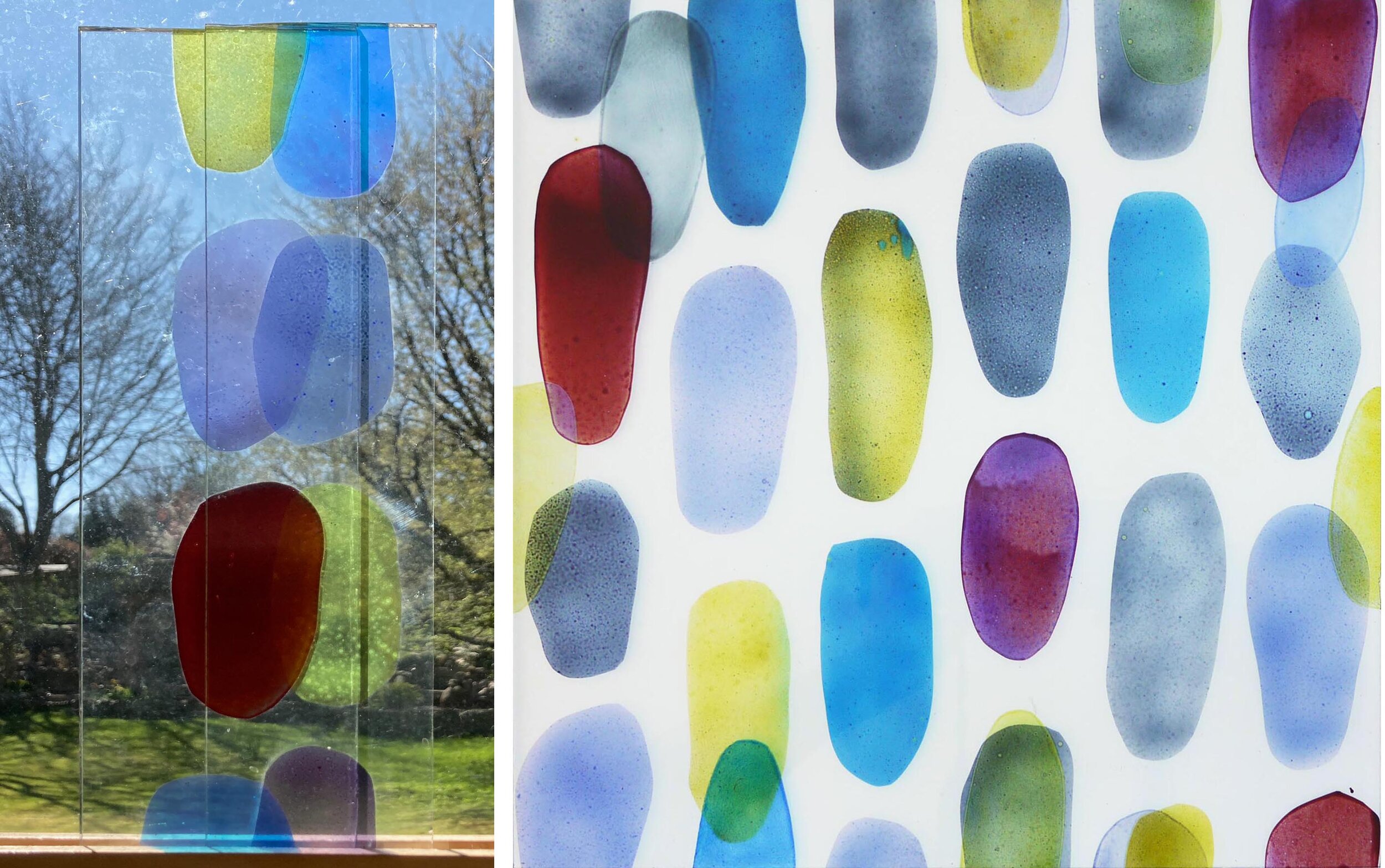Just Another Story Two black and white drawings by Ray Ward, the second one shows the same scene from inside the room.
Just Another Story is an old drawing of Ray’s that he had a copy of on his studio wall with the intention of using it as inspiration for a painting, however I managed to grab it first. In my glass interpretation of the drawing (below) I focused on the architectural setting of the scene, using a white sandblasted line on dark red glass for the exterior and the opposite, a dark red line on white opalescent glass, for the interior. I didn’t want to confuse the lovely simplicity of the lines by introducing lead lines into the picture and I couldn’t quite decide which glass to use for the thickness of the wall between the hopeless man and the sagging woman. I tried the muranese glass (below left) which makes every composition sparkle and which I’ve been overusing, but finally settled on an olive green strip (below right).
Just Another Story Stained glass panel in progress
As soon as I put those three colours together, I saw that I could extend the piece by making a leaded border to suggest the extension of the cross section through the house using glass of different tones and textures in the same colour combination. This gave the figures more space and also provided a place to write the title, something I’d intended to do on one of these pieces before but never found the right place.
Just Another Story Final version 385 x 300 mm and detail showing glass textures in natural light.
MememememeME Egg tempera on gesso 375 x 530 Bad Shadow Ink on Paper 420 x 596 mm, both by Ray Ward
The other drawing of Ray’s that I chose to work from at the same time was one of several versions of a bathroom scene viewed through a window. The most recent version (above left) looks exactly like our old house on Five Stiles Road, but as it’s too hard for me to work from a coloured original I went back to an earlier drawing (above right) where the picture is more extreme, both emotionally and in its lines of perspective. In case you’re wondering what it’s all about this is a quote from Ray.
“For the record, he is seeing a reflection (shadow) of someone he dislikes, any sort of hate being self hate being the sub text. I should know.”
So is this “There is generally some idea behind them all but sometimes knowing that ruins the picture so not always worth knowing”, which is an attitude I adopt as I get on with choosing and cutting the glass.
Bad Shadow: Left, glass pieces cut & laid over copy of drawing. Right, first attempt at stained glass panel.
This panel turned out to be tricky, I had an idea for the bricks which took two layers of sandblasting over a complicated stencil to match the sharp dots in the original drawing. The shading and painting on the bathroom pieces also took two goes, the first time I leaded up the panel (above right) there wasn’t enough sense of space so I added more dark lines and shading, then refired and releaded the pieces (below). This panel is one that looks much better and richer in the natural light of the window rather than on the even light of the lightbox, which to me is a sign of success.
Above, Bad Shadow, final version 325 x 385 mm. Below, detail of Bad Shadow.


























